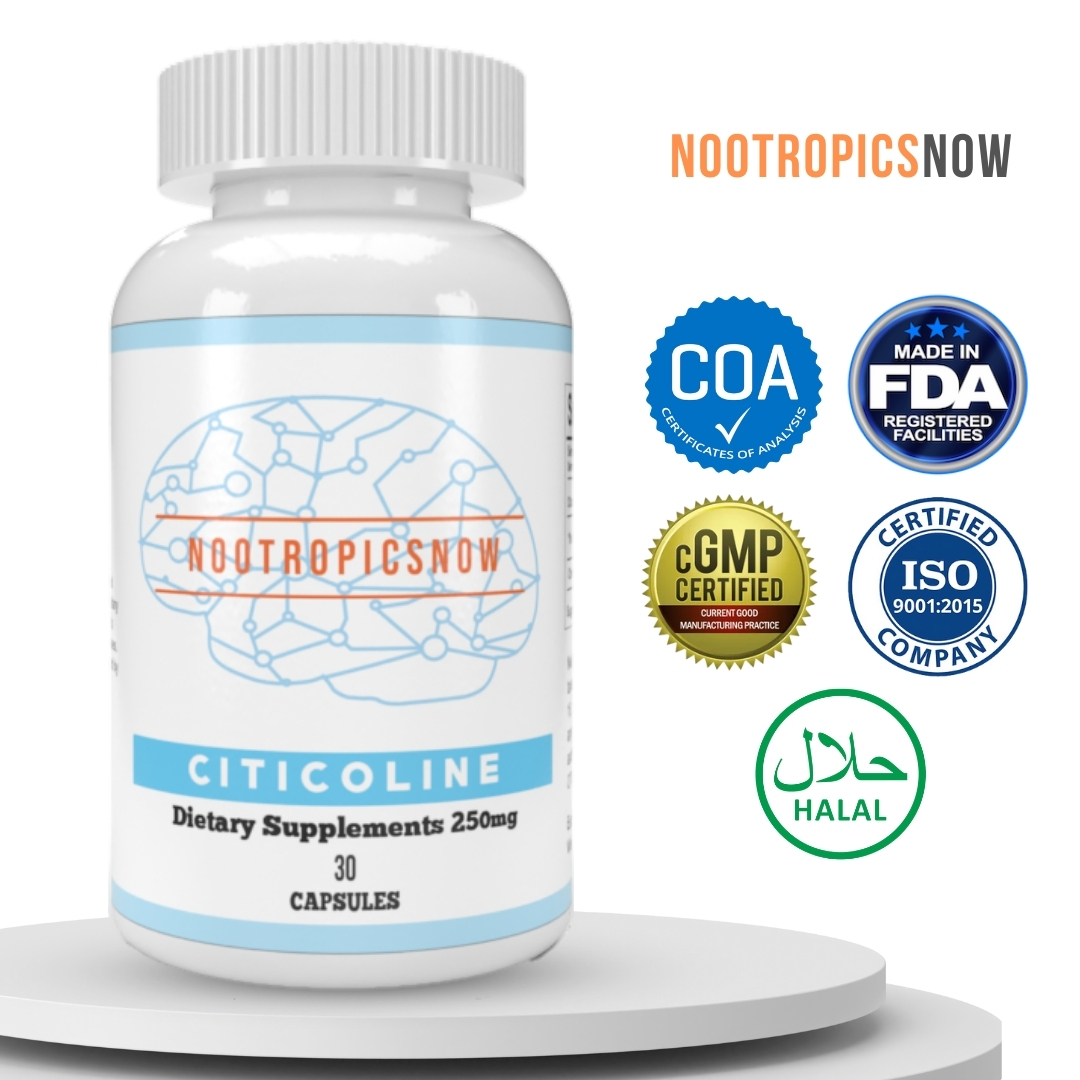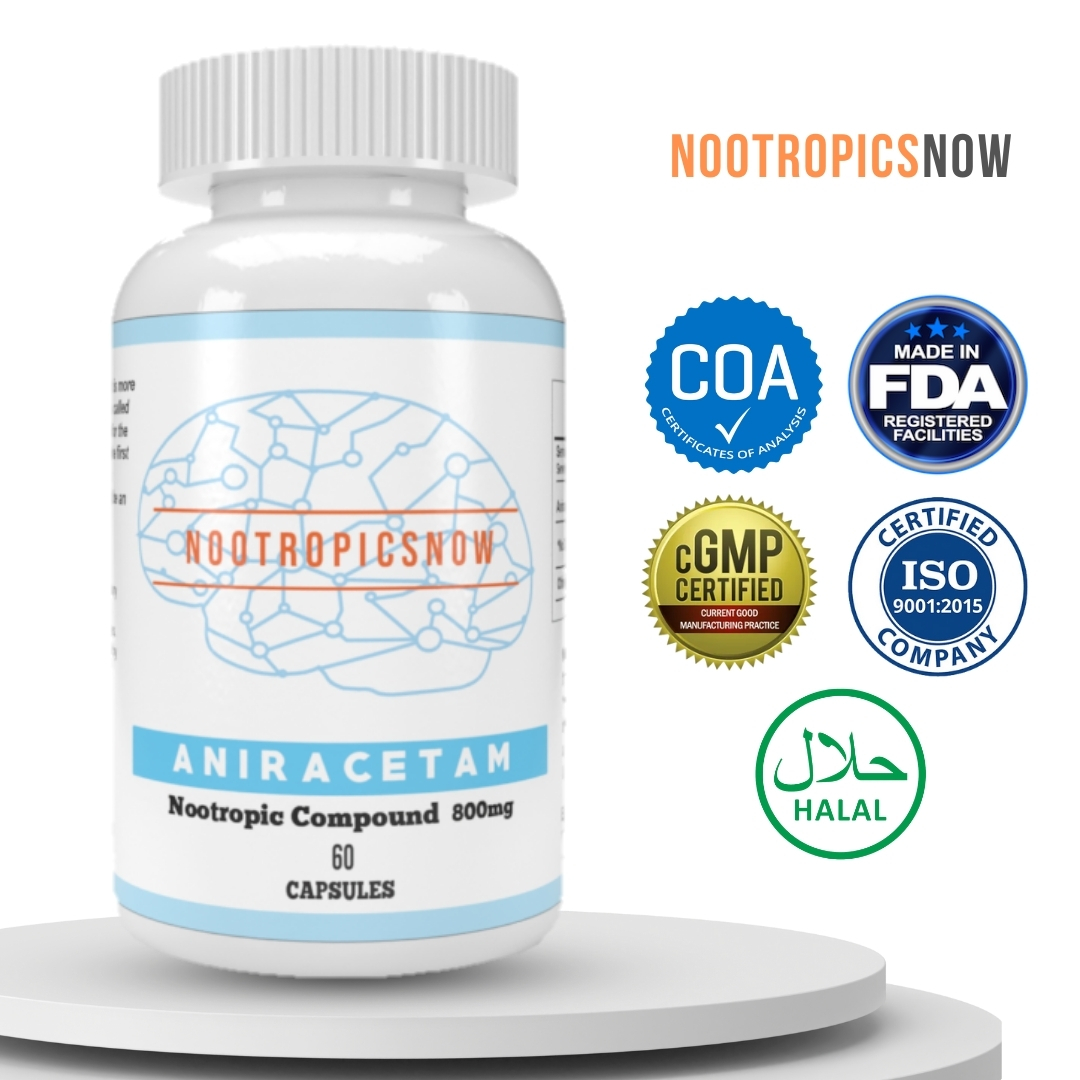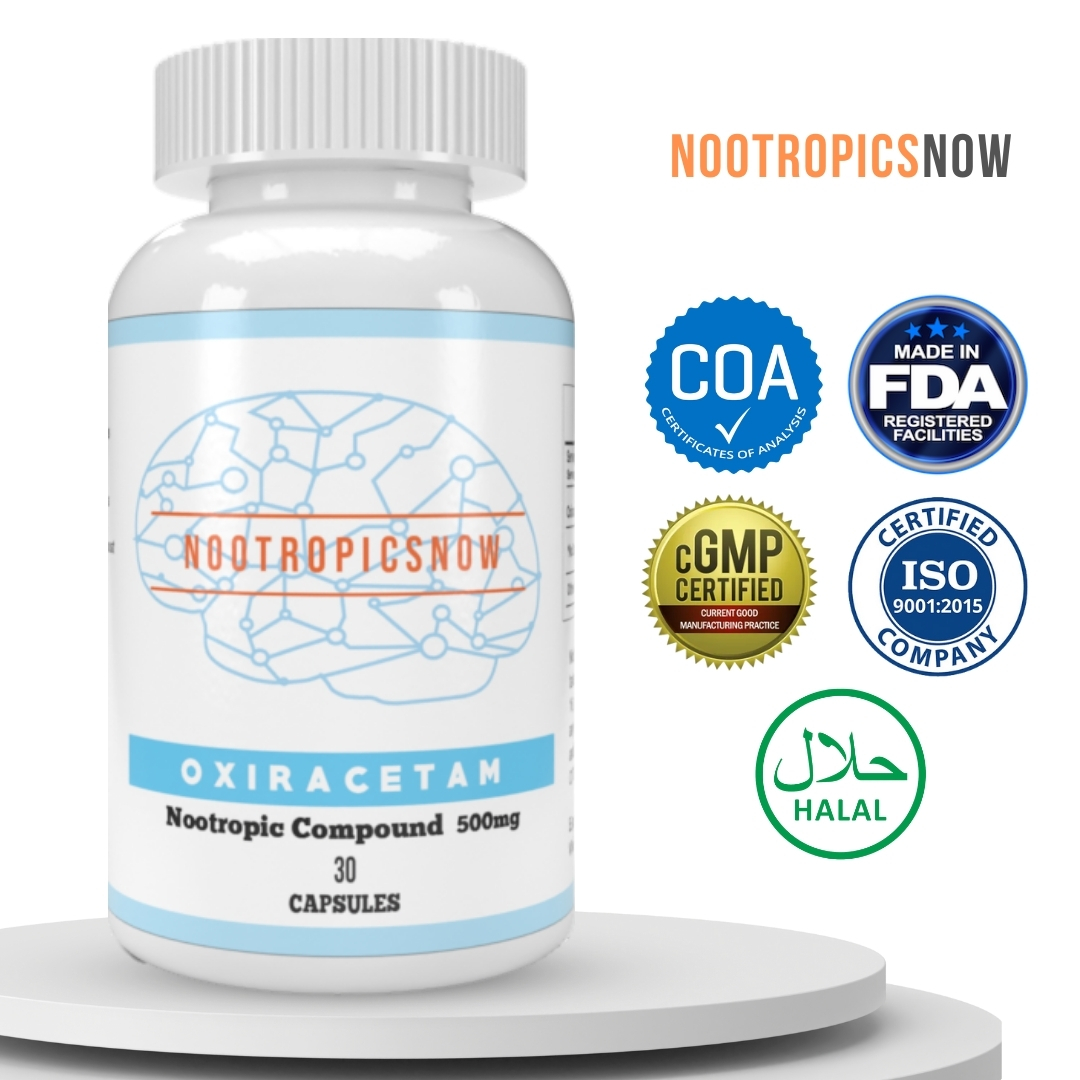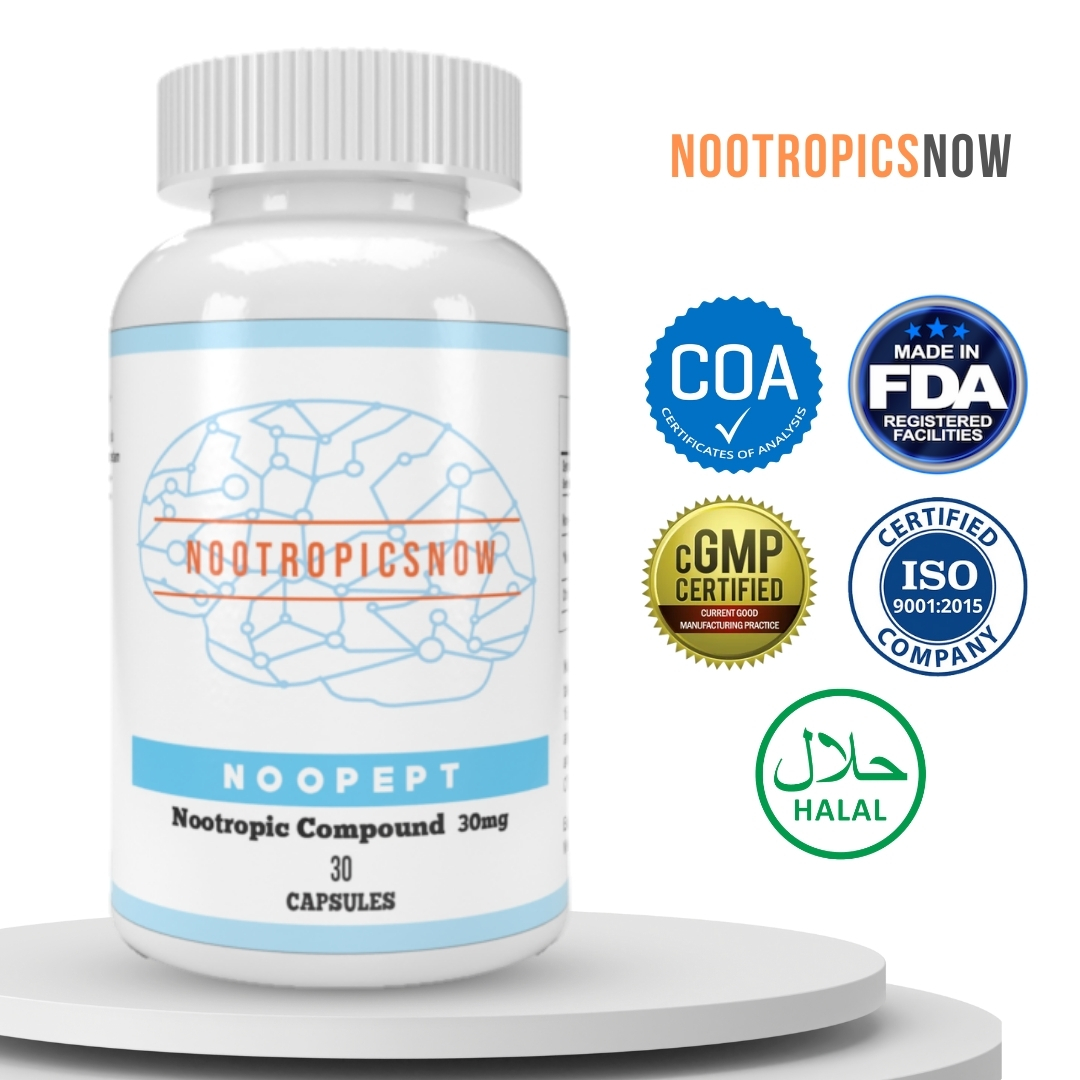Piracetam: Benefits, Uses & Side Effects

Piracetam Nootropic: A Comprehensive Guide for Cognitive Enhancement
Piracetam, the original nootropic, has been a subject of intrigue and interest for those seeking to enhance their cognitive abilities. This synthetic molecule, derived from gamma-aminobutyric acid (GABA), is known for its potential to improve memory, learning, and overall brain function. This guide delves into the world of piracetam, exploring its mechanisms, benefits, dosage, potential side effects, and its place within the broader landscape of nootropics.
What is Piracetam?
Developed in 1964 by Dr. Corneliu Giurgea, a Romanian psychologist and chemist, piracetam was initially intended to treat motion sickness. However, it soon became apparent that the drug possessed cognitive-enhancing properties, leading Dr. Giurgea to coin the term “nootropic” to describe substances that selectively enhance cognitive function. Since its inception, piracetam has remained a staple in the nootropic community, studied for its effects on various cognitive functions and neurological conditions. However, its regulatory status varies from country to country; for example, in the United States, it is not approved as a drug, thus impacting its availability.
How Does Piracetam Work? Understanding the Mechanisms
While the exact mechanisms of piracetam are not fully elucidated, several theories attempt to explain its effects on the brain. Here’s a breakdown of some of the key proposed mechanisms:
Enhanced Neurotransmission

Piracetam is believed to enhance the transmission of signals between neurons. It achieves this primarily through the modulation of neurotransmitter systems, specifically acetylcholine (ACh) and glutamate. Acetylcholine is crucial for memory, learning, and attention. Piracetam may potentiate the effects of ACh by increasing its release and improving the sensitivity of ACh receptors. Similarly, glutamate, the brain’s primary excitatory neurotransmitter, plays a vital role in synaptic plasticity, the ability of synapses to strengthen or weaken over time. Piracetam may influence glutamate neurotransmission by modulating AMPA receptors, thereby facilitating long-term potentiation (LTP), a cellular mechanism underlying learning and memory.
Improved Membrane Fluidity
Another prominent theory revolves around piracetam’s ability to increase the fluidity of neuronal cell membranes. Cell membranes are composed of lipid bilayers, and their fluidity is essential for the proper functioning of membrane-bound proteins, including receptors and ion channels. Piracetam can interact with these membranes, increasing their flexibility and allowing for better integration of proteins within the membrane structure. This improvement in membrane fluidity can enhance neuronal communication and protect against age-related decline.
Increased Cerebral Blood Flow
Piracetam has been shown to increase cerebral blood flow, which is critical for providing neurons with the oxygen and glucose they need to function optimally. This enhancement in blood flow may be particularly beneficial in individuals with impaired cerebral circulation or those experiencing cognitive decline due to vascular issues. By improving blood flow, piracetam can boost energy metabolism in the brain and support overall neuronal health.
Neuroprotective Properties
Piracetam possesses neuroprotective properties, shielding neurons from damage caused by various factors, including oxidative stress and excitotoxicity. Oxidative stress, resulting from an imbalance between the production of free radicals and the body’s ability to neutralize them, can damage cellular components, including DNA and proteins. Piracetam can act as an antioxidant, scavenging free radicals and reducing oxidative damage. Excitotoxicity, on the other hand, refers to neuronal damage caused by excessive stimulation of glutamate receptors. Piracetam may protect against excitotoxicity by modulating glutamate neurotransmission and preventing excessive activation of NMDA receptors.
Benefits of Piracetam: Cognitive Enhancement and More
The potential benefits of piracetam have made it a popular choice for individuals seeking cognitive enhancement. These benefits extend beyond simple memory improvement and encompass various aspects of cognitive function.
Memory Enhancement
One of the most well-known benefits of piracetam is its ability to enhance memory. Studies have demonstrated that piracetam can improve both short-term and long-term memory. This effect is likely mediated by its influence on acetylcholine and glutamate neurotransmission, as well as its ability to enhance synaptic plasticity.
Improved Learning Ability
Piracetam can facilitate learning by increasing the speed and efficiency of information acquisition. This can be particularly beneficial for students or individuals involved in intellectually demanding tasks. By enhancing neuronal communication and synaptic plasticity, piracetam can make it easier to learn new information and retain it over time.
Enhanced Focus and Concentration
Many users report that piracetam improves focus and concentration, making it easier to stay on task and resist distractions. This effect may be due to its influence on neurotransmitter systems involved in attention and executive function. For instance, by modulating acetylcholine levels, piracetam can enhance alertness and improve the ability to maintain attention over extended periods.
Increased Mental Clarity
Piracetam is often associated with increased mental clarity and reduced “brain fog.” This subjective experience is likely related to its ability to improve neuronal communication and enhance overall brain function. Users may feel more alert, focused, and able to think more clearly and efficiently.
Neuroprotective Effects
As mentioned earlier, piracetam possesses neuroprotective properties, which can help protect neurons from damage and promote long-term brain health. This is particularly important for aging individuals or those at risk of neurodegenerative diseases. By reducing oxidative stress and excitotoxicity, piracetam can help maintain neuronal integrity and prevent cognitive decline.
Potential Benefits for Specific Conditions
Besides its general cognitive-enhancing effects, piracetam has been investigated for its potential benefits in specific conditions, including:
Piracetam Dosage: Finding the Right Amount
Determining the appropriate dosage of piracetam is crucial for maximizing its benefits while minimizing the risk of side effects. Dosage can vary based on individual factors such as age, weight, sensitivity, and the specific purpose for which piracetam is being used.
General Dosage Guidelines
The typical dosage range for piracetam is between 1.6 grams and 4.8 grams per day, usually divided into two or three doses. It’s generally recommended to start with a lower dose and gradually increase it over time to assess individual tolerance and response.
Loading Dose
Some users opt for a “loading dose” when first starting piracetam. This involves taking a higher initial dose for the first few days to quickly saturate the system and potentially experience more rapid effects. A typical loading dose is around 4.8 grams per day, divided into multiple doses. After the loading period, the dosage is reduced to the maintenance range of 1.6 grams to 4.8 grams per day.
Cycling
To prevent tolerance and maintain efficacy, some users practice “cycling” piracetam. This involves taking piracetam for a certain period, followed by a break of equal or longer duration. For example, a common cycling strategy is to take piracetam for four weeks, followed by a four-week break.
Choline Supplementation
Piracetam increases acetylcholine turnover in the brain, which can potentially lead to choline depletion. To prevent this, it’s often recommended to supplement with a choline source, such as choline bitartrate, alpha-GPC, or CDP-choline. Choline supplementation can enhance the effects of piracetam and reduce the risk of headaches, a common side effect associated with choline deficiency. Typical choline dosages range from 300 mg to 600 mg per day.
It’s often suggested to use Alpha-GPC as a choline source:

View Product
Or CDP-Choline:

View Product
Side Effects of Piracetam: What to Watch Out For
While piracetam is generally considered safe, it’s essential to be aware of potential side effects. Most side effects are mild and transient, but some individuals may be more susceptible to experiencing them.
Common Side Effects
Common side effects of piracetam include:
Rare Side Effects
Rare but more serious side effects of piracetam include:
Contraindications
Piracetam is contraindicated in individuals with:
Piracetam Stacks: Combining for Synergistic Effects
Many nootropic users combine piracetam with other substances to enhance its effects or address potential side effects. These combinations are known as “stacks.” Some popular piracetam stacks include:
Piracetam and Choline
As mentioned earlier, choline supplementation is often recommended when taking piracetam to prevent headaches and enhance cognitive effects. Common choline sources include choline bitartrate, alpha-GPC, and CDP-choline.
Piracetam and Aniracetam
Aniracetam is another racetam nootropic with similar but distinct effects compared to piracetam. Aniracetam is believed to be more potent and have more pronounced effects on mood and anxiety. Combining piracetam and aniracetam may provide a more comprehensive cognitive boost.

View Product
Piracetam and Oxiracetam
Oxiracetam is known for its stimulating effects and its ability to improve focus and concentration. Combining piracetam and oxiracetam can provide a balanced blend of cognitive enhancement and increased alertness.

View Product
Piracetam and Noopept
Noopept is a potent nootropic with similar effects to piracetam but at much lower dosages. Combining piracetam and noopept may offer synergistic cognitive benefits.

View Product
Piracetam and Ginkgo Biloba
Ginkgo biloba is a natural supplement known for its ability to improve cerebral blood flow and enhance memory. Combining piracetam and ginkgo biloba may synergistically improve cognitive function.

View Product
Where to Buy Piracetam
Piracetam can be purchased from various sources, including online retailers, supplement stores, and pharmacies in some countries. However, it’s essential to choose a reputable source to ensure product quality and authenticity. Be sure to check for third-party testing and certifications to verify the purity and potency of the product. Also, be mindful of the regulatory status of piracetam in your country, as it may require a prescription in some regions.
Piracetam vs. Other Nootropics
Piracetam is just one of many nootropics available, each with its unique properties and effects. Some popular alternatives to piracetam include:
Aniracetam
As previously mentioned, aniracetam is another racetam nootropic that is believed to be more potent than piracetam and have more pronounced effects on mood and anxiety.
Oxiracetam
Oxiracetam is known for its stimulating effects and its ability to improve focus and concentration.
Noopept
Noopept is a potent nootropic with similar effects to piracetam but at much lower dosages.
Phenylpiracetam
Phenylpiracetam is a more potent derivative of piracetam with added stimulating effects.
Modafinil
Modafinil is a wakefulness-promoting agent that is often used off-label as a nootropic. It is known for its ability to improve focus, concentration, and alertness.
Natural Nootropics
Many natural substances also possess nootropic properties, including:
Conclusion: Is Piracetam Right for You?
Piracetam, the original nootropic, has a long history of use for cognitive enhancement and various other purposes. It offers a range of potential benefits, including improved memory, learning, focus, and mental clarity. However, it’s essential to be aware of potential side effects and contraindications and to consult with a healthcare professional before using piracetam, especially if you have any underlying medical conditions or are taking other medications. Ultimately, the decision of whether or not to use piracetam is a personal one that should be based on careful consideration of your individual needs, goals, and risk tolerance.
Piracetam Nootropic: A Detailed Exploration
Piracetam, often hailed as the original nootropic, continues to be a subject of considerable interest and debate within the cognitive enhancement community. Synthesized in 1964 by Dr. Corneliu Giurgea, this molecule launched the field of nootropics, substances intended to improve cognitive functions, especially memory and learning. We will delve into the specifics of Piracetam, including its mechanism of action, reported benefits, and potential side effects. Understanding Piracetam requires a comprehensive look at both the scientific literature and anecdotal evidence surrounding its use.
Unveiling Piracetam: Origin and Chemical Properties
Developed by UCB Pharma, Piracetam was initially created with the intention of treating motion sickness. However, its cognitive-enhancing properties quickly became apparent. Chemically, Piracetam is a cyclic derivative of GABA (gamma-aminobutyric acid), though it does not directly affect GABA receptors. This structural similarity contributes to its unique pharmacological profile.
Mechanisms of Action: How Does Piracetam Work?
The exact mechanisms through which Piracetam exerts its effects remain under investigation. Current research suggests that several pathways are involved. Firstly, Piracetam is believed to modulate neurotransmitter systems, specifically acetylcholine and glutamate. Acetylcholine is crucial for memory and learning, and Piracetam may enhance its release and receptor sensitivity. Moreover, Glutamate, the primary excitatory neurotransmitter, plays a vital role in synaptic plasticity.
Another proposed mechanism involves enhancing neuronal membrane fluidity. Piracetam may improve the flexibility of cell membranes, facilitating the movement of receptors and other molecules within the membrane. Therefore, This improved membrane fluidity can lead to better communication between neurons.
Furthermore, Piracetam can improve cerebral blood flow and oxygen utilization. By increasing the delivery of oxygen and glucose to the brain, Piracetam supports neuronal energy production. Consequently, these effects may lead to improved cognitive performance.
Neurotransmitter Modulation: Acetylcholine and Glutamate
Piracetam’s interaction with acetylcholine and glutamate is central to its cognitive effects. By potentiating cholinergic neurotransmission, Piracetam can improve memory consolidation and retrieval. It also modulates AMPA receptors, a type of glutamate receptor critical for synaptic plasticity. Improved modulation enhances long-term potentiation (LTP), a cellular mechanism underlying learning and memory.
Enhancing Membrane Fluidity: Promoting Neuronal Communication
The enhancement of neuronal membrane fluidity is another key aspect of Piracetam’s mechanism. Neuronal membranes, being composed of lipids and proteins, are crucial for maintaining cellular integrity and enabling communication. By improving the flexibility of these membranes, Piracetam can facilitate the efficient functioning of ion channels and neurotransmitter receptors.
Cerebral Blood Flow: Supporting Neuronal Metabolism
The positive influence of Piracetam on cerebral blood flow promotes improved cognitive function. Adequate blood flow is essential to supply oxygen and nutrients to neurons, supporting their metabolic demands. By enhancing blood flow, Piracetam ensures that neurons have the energy required for optimal performance.
Reported Benefits of Piracetam
Users report a range of cognitive benefits attributed to Piracetam, however, individual experiences can vary widely.
It’s important to note that the extent of these benefits can vary from person to person. Factors such as dosage, individual biochemistry, and overall health can influence the effects of Piracetam.
Medical Applications of Piracetam
Beyond its use as a cognitive enhancer, Piracetam has been explored for various medical applications. While it is not approved for all indications in every country, it has been used to treat certain conditions.
It’s crucial to emphasize that Piracetam should only be used under the guidance of a healthcare professional for medical conditions. Self-treating can be dangerous and may lead to adverse effects.
Dosage and Administration of Piracetam
Determining the appropriate dosage of Piracetam can depend on individual needs and response. A common starting dose is around 1.6 to 4.8 grams per day, divided into multiple doses. Therefore, it’s typically taken two to three times daily.
The onset of effects can vary, with some users reporting noticeable changes within a few days, while others may require several weeks to experience the full benefits. It’s crucial to start with a lower dose and gradually increase it as needed, while carefully monitoring for any potential side effects.
Piracetam is available in various forms, including tablets, capsules, and powder. The powder form is often more cost-effective, but requires accurate measuring.
Potential Side Effects and Safety Considerations
Piracetam is generally considered safe, with a low incidence of serious side effects. However, some users may experience mild and transient side effects. The reported side effects include:
These side effects are usually mild and resolve on their own. Starting with a lower dose and gradually increasing it can help minimize the risk of side effects.
Contraindications and Precautions
Piracetam is contraindicated in individuals with severe kidney disease or those who are allergic to it. It should also be used with caution in people with bleeding disorders, as it can have a mild antiplatelet effect. Individuals taking anticoagulants or antiplatelet medications should consult their doctor before using Piracetam.
Stacking Piracetam with Other Nootropics
Many users experiment with stacking Piracetam with other nootropics to enhance its effects. One common combination is Piracetam with a choline source, such as choline bitartrate or Alpha GPC. Since Piracetam may increase acetylcholine turnover in the brain, supplementing with choline can help prevent depletion and enhance cholinergic neurotransmission.
Other nootropics that are sometimes stacked with Piracetam include:
It’s essential to exercise caution when stacking nootropics and to start with low doses to assess tolerance and potential interactions.
Piracetam in the Philippines: Legal Status and Availability
The legal status and availability of Piracetam can vary depending on the country. In some regions, it is available over-the-counter, while in others, it may require a prescription.
The legal status of Piracetam in the Philippines isn’t definitively categorized, as it can vary and depend on specific regulations in place at the time. It is advisable to consult with local healthcare professionals or regulatory bodies to get the most up-to-date information on its status.
Alternative Nootropics to Consider
While Piracetam remains a popular choice, numerous other nootropics offer cognitive-enhancing benefits. Some alternatives include:
The choice of nootropic depends on individual preferences, needs, and goals. Exploring different options and carefully evaluating their effects can help identify the most suitable cognitive enhancer.
Long-Term Effects and Considerations
The long-term effects of Piracetam use are not fully understood, and more research is needed to assess its safety and efficacy over extended periods. It is important to cycle Piracetam use to prevent tolerance and potential downregulation of receptors. Taking breaks from Piracetam can help maintain its effectiveness and minimize the risk of adverse effects.
Additionally, it’s essential to adopt a holistic approach to cognitive enhancement. Nootropics can be a valuable tool, but they are not a substitute for a healthy lifestyle. Getting enough sleep, eating a nutritious diet, exercising regularly, and managing stress are all crucial for optimizing cognitive function.
Conclusion: Evaluating Piracetam as a Nootropic
Piracetam is a historical and still-relevant nootropic that can provide cognitive benefits for some individuals. Its mechanisms of action, involving neurotransmitter modulation, membrane fluidity enhancement, and cerebral blood flow improvement, contribute to its potential cognitive-enhancing effects. However, individual experiences can vary, and it’s crucial to approach Piracetam use with caution and awareness.
Before using Piracetam, it is essential to consult with a healthcare professional to discuss the potential benefits and risks. It’s also important to conduct thorough research, start with a low dose, and carefully monitor for any side effects.
Nootropics can be a valuable tool for cognitive enhancement, but they are not a panacea. Adopting a holistic approach to brain health, incorporating healthy lifestyle habits, and consulting with healthcare professionals can help maximize the benefits of nootropics and support overall cognitive well-being.


